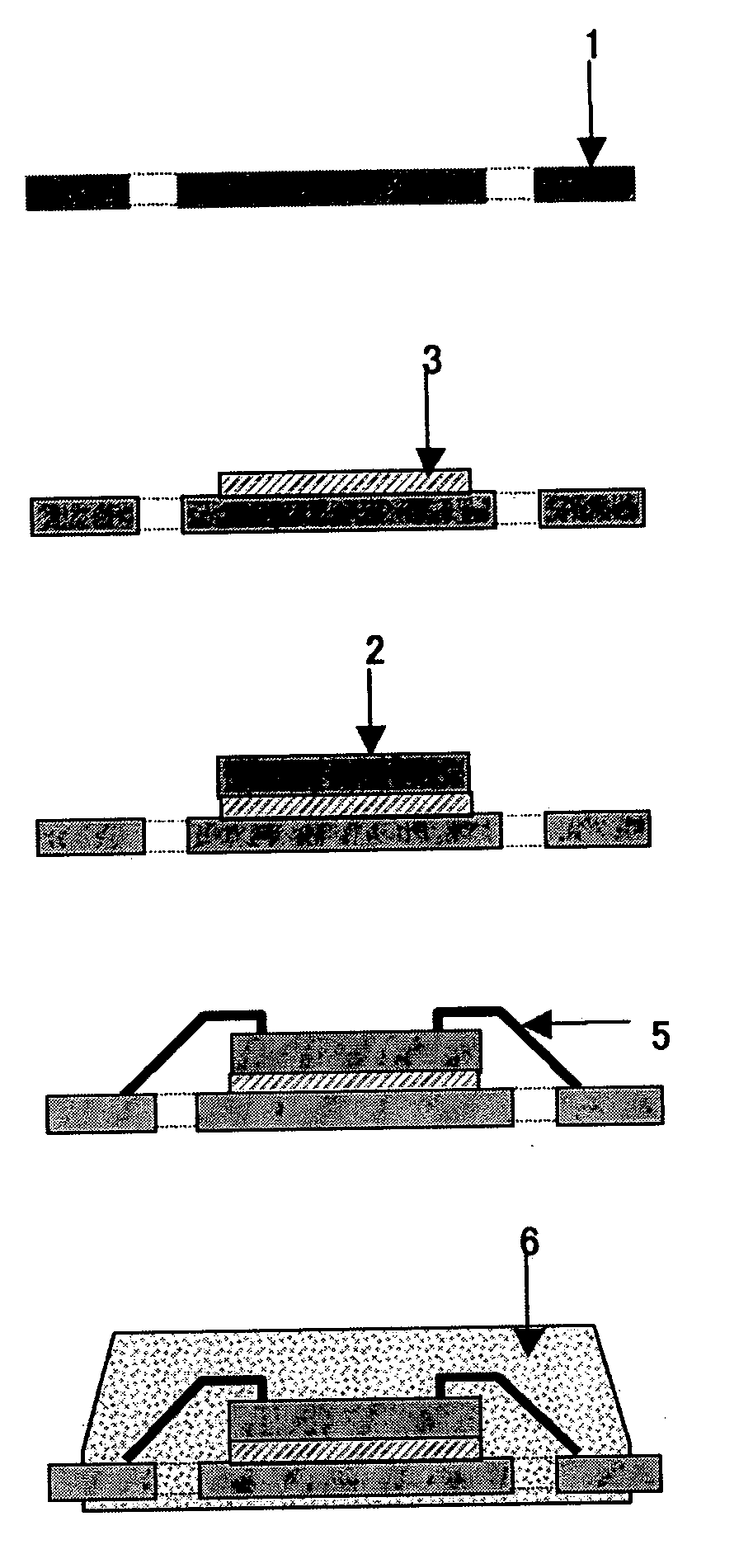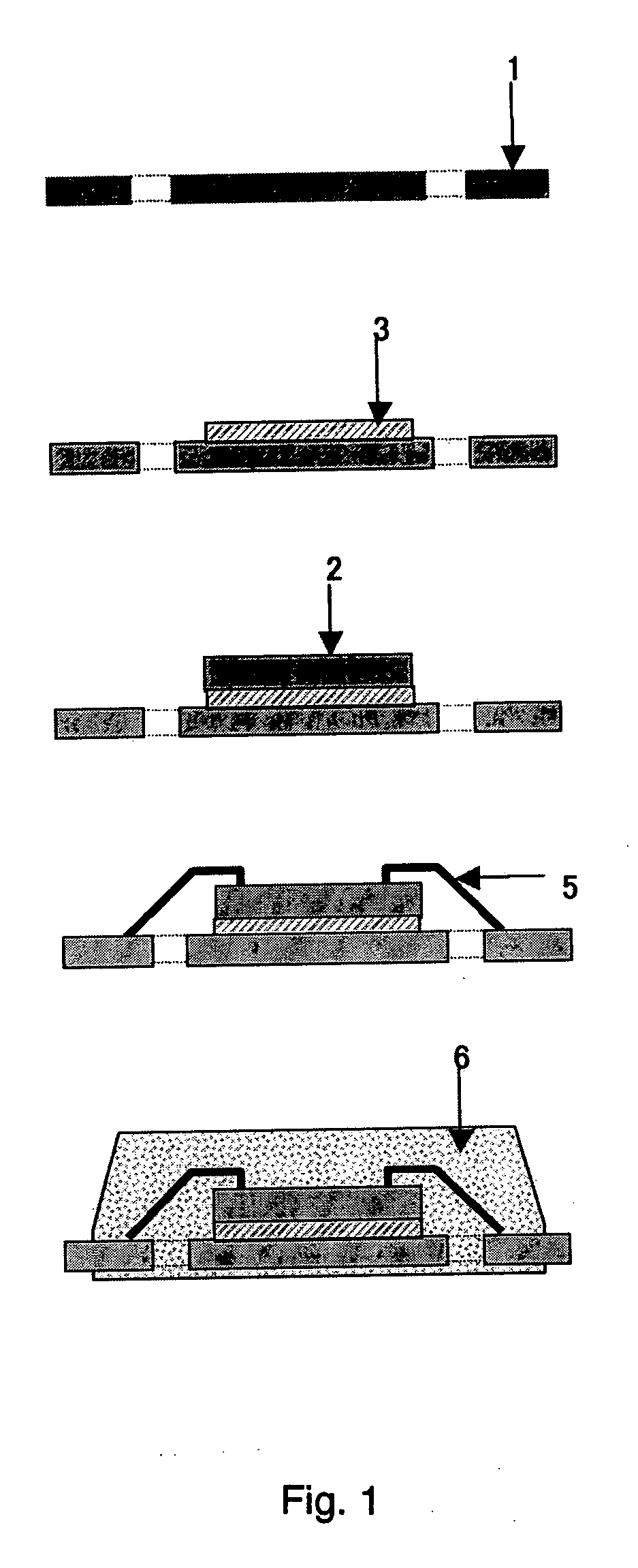Conductive adhesive agent and process for manufacturing article using the conductive adhesive agent
a technology of conductive adhesive agent and manufacturing article, which is applied in the direction of non-metal conductors, conductors, metal/alloy conductors, etc., can solve the problems of void region, inability to achieve direct contact between the rear-surface electrode layer and the cured product layer, and inability to achieve contact between the rear-surface electrode layer and the metal filler
- Summary
- Abstract
- Description
- Claims
- Application Information
AI Technical Summary
Benefits of technology
Problems solved by technology
Method used
Image
Examples
examples
[0169] The present invention will be explained more specifically below by showing specific examples. Each of the specific example is an example of the best modes according to the present invention, but the technical scope of the present invention is not limited by these specific examples.
examples 1-1 to 1-8
and Comparative Examples 1-1 to 1-3
[0170] The ratio of blended amounts of a metal powder (A), ultrafine particles (B), a thermosetting resin (C) and a solvent (D), which are essential components in a conductive adhesive agent, is selected variously, and conductive adhesive agents of examples 1-1 to 1-8 and conductive adhesive agents of comparative examples 1-1 to 1-3 are prepared according to the following procedures.
[0171] Silver ultrafine particles having a covering layer of Polyoxyalkyleneamine on the metal surfaces thereof, which are used as the ultrafine particles (B), are prepared by the following process.
[0172] A commercially available ultrafine particle dispersion of silver (trade name: Independently dispersive Ultrafine Particles Ag 1TH1, ALVAC Corporate Center Co., Ltd.) is used to prepare a dispersion solution of silver ultrafine particle having an average particle diameter of 3 nm, which comprises 6 parts by weight of Jefamine T403 as polyoxyalkyleneamine and 59 parts ...
examples 1-10 to 1-13
[0196] The ultrafine particles (B) and the metal powder (A) are used as conductive media, and a conductive adhesive agent containing the metal powder (A), the ultrafine particles (B), the thermosetting resin (C) and the solvent (D) as major constituent parts is prepared according to the following procedures. At this time, the blending ratio of the spherical silver powder to the scaly silver powder is selected variously, and 4 types of conductive adhesive agents of examples 1-10 to 1-13 are fabricated.
[0197] As the thermosetting resin (C), a thermosetting epoxy resin composition containing an epoxy resin, an acid anhydride as a curing agent thereof, and a silane-coupling agent is prepared in the following manner. In a stirring container are added a dibasic acid modified epoxy resin (Epicoat 871, Japan Epoxy Resin Co., Ltd.), a rubber modified epoxy resin (EPR1309, Asahi Denka Co., Ltd.), a silane-coupling agent (AZ6165, Nippon Unicar Company limited) and an acid anhydride (Liquacid ...
PUM
| Property | Measurement | Unit |
|---|---|---|
| particle size | aaaaa | aaaaa |
| particle size | aaaaa | aaaaa |
| temperature | aaaaa | aaaaa |
Abstract
Description
Claims
Application Information
 Login to View More
Login to View More - R&D
- Intellectual Property
- Life Sciences
- Materials
- Tech Scout
- Unparalleled Data Quality
- Higher Quality Content
- 60% Fewer Hallucinations
Browse by: Latest US Patents, China's latest patents, Technical Efficacy Thesaurus, Application Domain, Technology Topic, Popular Technical Reports.
© 2025 PatSnap. All rights reserved.Legal|Privacy policy|Modern Slavery Act Transparency Statement|Sitemap|About US| Contact US: help@patsnap.com


